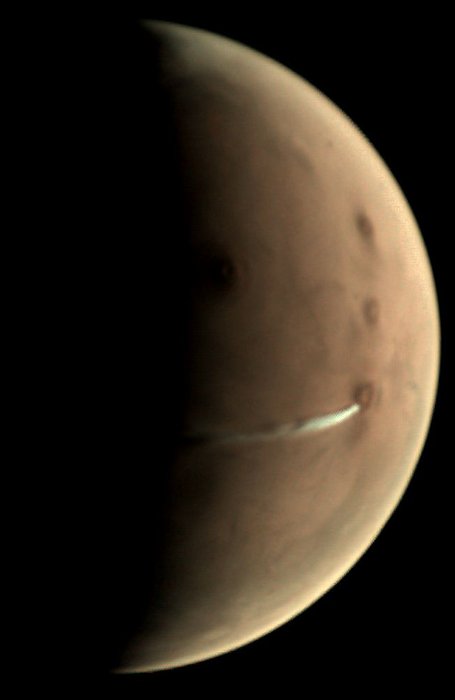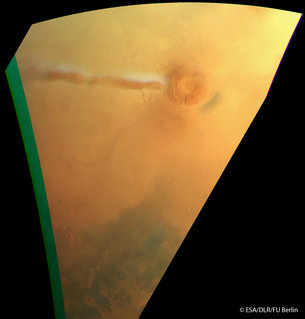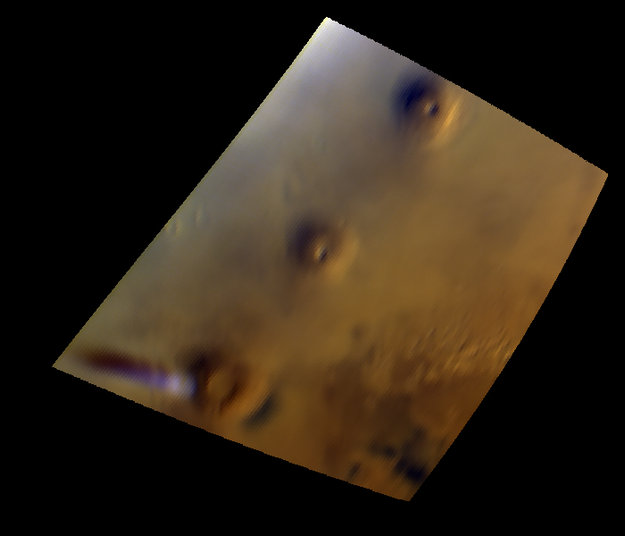
The European Space Agency (ESA) said on October 25, 2018, that its Mars Express spacecraft has acquired hundreds of images over a period of weeks of a curious cloud on Mars. ESA has tracked the cloud since September 13, as it hovers in the vicinity of the 12-mile-high (20-km-high) Arsia Mons volcano, close to Mars’ equator.
It looks and sounds as if this cloud could be volcanic, doesn’t it? Yet that would be highly unlikely, since scientists have never detected any form of volcanic activity on Mars; it appears to be a geologically dead world. ESA said the cloud isn’t volcanic. Instead, it’s driven by ordinary meteorological conditions, not unlike those found on Earth. ESA explained:
In spite of its location, this atmospheric feature is not linked to volcanic activity but is rather a water ice cloud driven by the influence of the volcano’s leeward [downwind] slope on the air flow – something that scientists call an orographic or lee cloud – and a regular phenomenon in this region.

The cloud extends about 900 miles (1,500 km) west of the volcano. As a comparison, the cone-shaped volcano has a diameter of about 155 miles (250 km); you can see a view of the region with labels here.
Mars experienced its northern winter solstice on October 16, bringing winter into Mars’ Northern Hemisphere and summer to its Southern Hemisphere. ESA said:
In the months leading up to this solstice, most cloud activity disappears over big volcanoes like Arsia Mons; its summit is covered with clouds throughout the rest of the Martian year.
However, a seasonally recurrent water ice cloud, like the one shown in this image, is known to form along the southwest flank of this volcano – it was previously observed by Mars Express and other missions in 2009, 2012 and 2015.
The cloud’s appearance varies throughout the Martian day, growing in length during local morning downwind of the volcano, almost parallel to the equator, and reaching such an impressive size that could make it visible even to telescopes on Earth.
The formation of water ice clouds is sensitive to the amount of dust present in the atmosphere. These images, obtained after the major dust storm that engulfed the entire planet in June and July, will provide important information on the effect of dust on the cloud development and on its variability throughout the year.
Follow the development of this cloud via the daily images sent by Mars Express

Bottom line: ESA’s Mars Express spacecraft has acquired hundreds of images of a curious elongated cloud on Mars, on the leeward or downwind side of a volcano.
The 2019 lunar calendars are here! Order yours before they’re gone. Makes a great gift.











